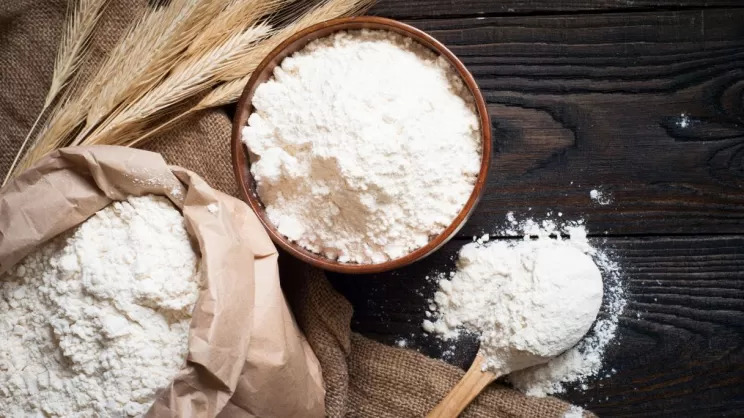Flour, also starting from the assumption that you are speaking only of flour, grain, are not all the same and not all are suitable for the preparation of all the recipes for the bakery products. To know which flour to use for a recipe that is very important, because the use of a flour wrong can ruin a pizza dough and compromise the final result, even if the working of the dough and cooking are perfect.
In this short article, we will explain the the difference between the various types of wheat flour (another name for corn), and we will help you to understand which is the best flour to use for pizza-making, to get a good dough.
For example, in the preparation of pizza, if you use a flour “weak”, you risk to get a dough tough and rubbery, and, in general, to prepare a good pizza we want to flour the “strong”.
But let us understand better what is the meaning of the terms “strong” and “weak” refer to the flour. First of all it is necessary to know the unit of measure with which you measure the strength of the flour: this unit of measurement is expressed in W. Often, this index is not listed on the package. It is therefore necessary to learn how to deduce the “W” of the flour starting from the amount of protein contained in. Usually, the higher the protein content, the higher the W; even if this concept is not always 100% correct, if not for wholemeal flour, it remains quite reliable.
A flour suitable for the preparation of the pizza must be strong enough to give the mixture of lightness and elasticity. Therefore, one has to have a W between 170 and 220, which corresponds roughly to a protein content of 10.5-11%.
Flour is the best to make pizza they are so soft wheat flour strong, that is, with a high index of protein able to start the process of the formation of gluten, such as flour 0 and, in particular, the Manitobaobtained through the grinding of the grains of wheat of a particular variety native to Canada.
For the pizza pan to do in the house, good results are also obtained with the flour type 00classic , refined white flour with a step of grinding compared to type-0 and is also suitable for the preparation of fresh pasta. A long rising, with a reshuffle after the first double volume, ensure good pizza.
Whole-wheat flour deserves a separate discussion between the types of wheat flour: especially if organic and stone groundit will be especially valuable from the nutritional point of view, as the product of the grinding will also contain the wheat germ and bran. However, whole-wheat flour can have a protein content higher than a wheat flour type 00, but the dough will be less elastic and lieviterà less because you will not be able to give life to a shirt the resulting gluten structure means. Nothing prevents you to use whole-wheat flour in the production of bread and pizza or other leavened products, but this will have to be mixed with a certain percentage of manitoba or other strong flour, to obtain satisfactory results.
In the preparation of home-made pizzaunlike what happens in most of the pizza, where the pizza professionals to adhere to the realization of pizzas, typical of the cuisine and Italian territory, as the pizza is neapolitan and romanwe can experiment with other flavors and other flours. Anyway, we have to bear in mind the capacity of the flour that we choose to produce a mixture that is suitable and easy to digest, is with the the yeast of beer with the yeast.
After analyzing the various categories of wheat flour, let's find out the flour of other cereals that we could use for the preparation of the pizza, making a selection of the most suitable and those not looking for a different taste.
The flour with a good amount of gluten (W high, so strong flour) are kamut and triticale, followed by spelt, which, however, lends itself well to replace a good percentage of wheat flour.
Risciola, rye, grains, special verna and tritordeumhave a W rather low, so they can enter in the composition of our pizza dough in a minimum. Finally, barley and oats are decidedly advised against for the preparation of the pizza, as it is much flour moderate, low gluten content.
We have understood that the combination of pizza and gluten is essential, it is extremely difficult and the use of flours buckwheat, maize, millet, rice, quinoa, soy, amaranth, and legumes, as it is of special flours that do not contain gluten and are suitable for celiac but do not interact with the normal leavening agents used for the pizza. In this case, in the mixture is added to the starch of corn, which, with the aid of the yeast of beer, give lightness to the mixture, making the pizza crispy on the outside but soft on the inside. There are also on sale mix of gluten-free flours already dosed.
Once you get to grips with the various types of flour and well known, their properties, and ability to rise, to achieve the pizza from the dough is perfect, with a good flavor and fragrant at the right point, you can also use special mixtures or buy them ready-made.

